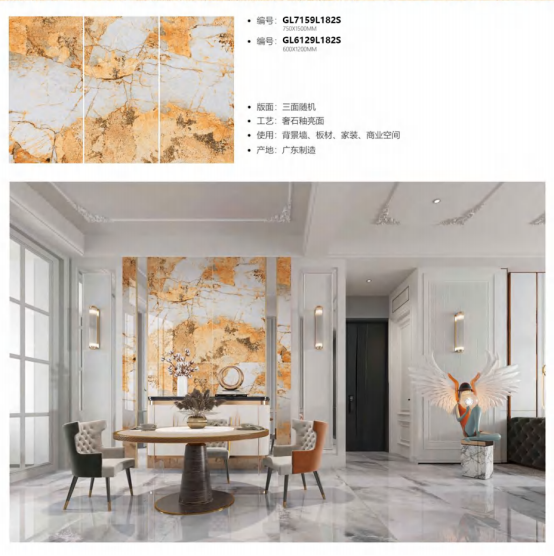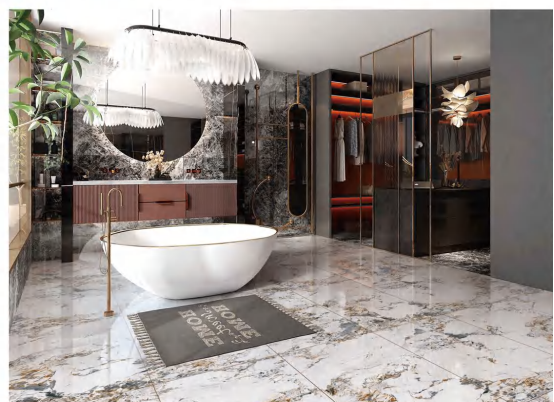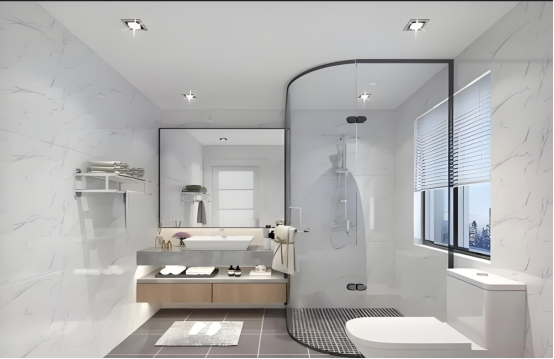Tile Parameters and Application Scenarios
Tile is a commonly used flooring material in construction and decoration. Its parameters and suitable scenarios vary depending on material, manufacturing process, and functional requirements. Below are the key parameters of tiles and their corresponding application scenarios.
I. Key Tile Parameters
Material Type
Glazed Tiles: Feature a glazed surface for water and stain resistance, with rich patterns but lower wear resistance.
Unglazed Tiles (Polished/Vitrified Tiles): No glaze layer, highly wear-resistant and anti-slip, but with limited design options.
Antique Tiles: Matte finish with good slip resistance, ideal for rustic styles.
Marble Tiles: Mimic natural stone textures, offering a luxurious look at a higher cost.
Mosaic Tiles: Small-sized pieces for decorative accents.
Size Specifications
Common sizes: 300×300mm, 600×600mm, 800×800mm (common for living rooms), 1200×600mm, 750x1500mm and 900x1800mm (for large spaces).
Thickness: 8-12mm (thicker tiles offer better load-bearing capacity, suitable for high-traffic areas).
Water Absorption Rate
Low absorption (<0.5%): Vitrified tiles, suitable for wet areas (e.g., bathrooms, kitchens).
Medium-high absorption (>10%): Ceramic tiles, suitable for dry areas (e.g., bedrooms, living rooms).
Wear Resistance (PEI Rating)
PEI 1-2: Low resistance, suitable for walls or bedrooms.
PEI 3-4: Medium-high resistance, ideal for living rooms and hallways.
PEI 5: Extremely high resistance, used in commercial spaces.
Slip Resistance (R-Value)
R9 (Low): Dry indoor areas.
R10-R11 (Medium-High): Kitchens, balconies.
R12-R13 (Very High): Bathrooms, poolside areas.
Surface Finish
Glossy: Easy to clean but reflective (modern styles).
Matte: Slip-resistant, low-key texture (Nordic, industrial styles).
Textured: Non-slip surface, suitable for outdoor or wet areas.
Environmental Safety
Must comply with national standards (Class A radioactivity is safe).
II. Recommended Application Scenarios
Living Room/Dining Room
Recommended:00×600mm, 800×800mm (common for living rooms), 1200×600mm, 750x1500mm and 900x1800mm
or larger glossy vitrified tiles, marble-effect tiles.

Reason: Durable, easy to clean, glossy surfaces enhance brightness.
Kitchen Ceramic Tile
Recommended:300x3000mm。400x400mm 600×600mm glazed or anti-slip unglazed tiles (R10+).
Reason: Stain-resistant, acid-proof, and slip-resistant.

Bathroom Ceramic Tile
Recommended: 300x3000mm。400x400mm 600×600mm antique or mosaic tiles (R11+).
Reason: Slip-resistant, waterproof, small size aids drainage slope.


Balcony/Outdoor
Recommended: Matte anti-slip tiles, wood-look tiles (R12+).
Reason: Weather-resistant, UV-proof, anti-slip, and frost-proof.
Commercial Spaces
Recommended: PEI 4-5 large-format tiles, granite-effect tiles.
Reason: High durability, impact-resistant, low maintenance.
Bedroom Floor Tiles
Recommended: Wood-look floor tiles, warm-toned matte tiles.
Reason: Visually cozy, comfortable underfoot (compatible with underfloor heating)
III. Key Considerations When Purchasing
Match parameters to space function: Prioritize water absorption for wet areas and wear resistance for high-traffic zones.
Style coordination: Modern styles suit solid colors or marble patterns; vintage styles suit antique tiles.
Budget control: Glazed tiles are cost-effective; natural stone-effect tiles are pricier.
Installation requirements: Large tiles require thin-set mortar techniques to prevent hollow spots.
Choosing tiles based on their parameters ensures a balance of aesthetics, functionality, and durability. It is recommended to select tiles based on specific environmental and design needs.



